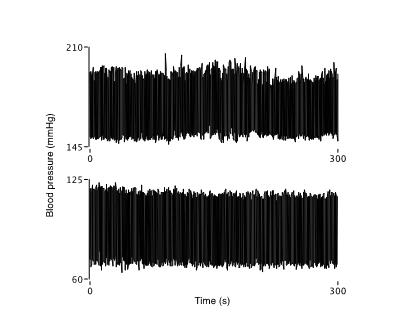Reports of research work funded by grants prior to 2015
University of Otago Wellington
STABLe – Stroke Therapy Aimed at Blood Pressure Lability Reduction
YC Tzeng
Department of Surgery & Anaesthesia
Stroke is a costly disease from human, societal, and economic perspectives. In New Zealand it is the third leading cause of death and the leading source of adult disability with an incidence rate that is rising. New approaches to stroke management are urgently required.
Recently a strategy has been suggested based on the concept of stabilising blood pressure through collateral blood vessels that supply the penumbra (a zone of reversible cerebral injury). Although average blood pressure is frequently manipulated to reach target ranges, this belies the fact that it is often very dynamic during acute stroke. Such blood pressure variability (BPV) may increase the risk of secondary complications such as haemorrhagic transformation. Therefore, in a rat model of acute ischaemic stroke we sought to investigate the nature of BPV as a potential target for pharmacological attenuation. We hypothesised that stroke would be associated with an increase in BPV.
Eighteen male Sprague Dawley rats underwent middle cerebral artery occlusion by the intraluminal suture technique, and five rats underwent sham surgery as control animals. All animals were implanted with a wireless telemeter for carotid blood pressure recording (EndoGear 3 System, Transonic Systems Inc., Ithaca, NY, USA). At day three post-op, animals were sacrificed and brain tissue retrieved for morphometric quantification of infarct volume.

Fig. 1. Example of a 5 minute carotid blood pressure recordings for a stroke (above) and a sham (below) animal. Greater blood pressure variability is evident in the stroke animal.
From a 1-5 minute segment of blood pressure data recorded 4-7 hours after surgery, BPV was characterised by spectral power analysis in the very-low (VLF, 0.02-0.20 Hz), low- (LF, 0.2-0.6 Hz), mid- (MF, 0.6-1.0 Hz) and high-frequency (HF, 1.0-2.0 Hz) ranges. Linear mixed effects analysis was used to assess the effect of stroke on BPV. We tested for a group (stroke vs sham), frequency (VLF, LF, MF and HF), and group x frequency interaction effects. Group comparisons of average blood pressure and heart rate were also made by linear mixed effects analysis. Statistical significance was set a priori at P ≤ 0.05.
An example carotid blood pressure recording is shown in Fig. 1. Table 1 shows average heart rate and blood pressure group comparisons. In agreement with our hypothesis, a significant group effect for BPV was found, indicating that stroke was associated with higher BPV than sham animals (P < 0.05) when considered across all frequency bands. BPV was frequency dependent (P < 0.05), with most spectral power concentrated in the VLF range. No group x frequency interaction was observed (P = 0.84), indicating that the relationship between BPV and frequency was comparable between groups.

These findings support the hypothesis that an elevation in BPV very early in acute stroke may be an important target for therapeutic intervention. Moreover, we speculate that cerebrovascular control may also be impaired in these animals, which may further contribute to infarct expansion. From here we aim to investigate the precise impact that this blood pressure elevation has on morphological indicators of ischaemic brain injury and to develop treatment interventions for BPV attenuation in acute ischaemic stroke.



